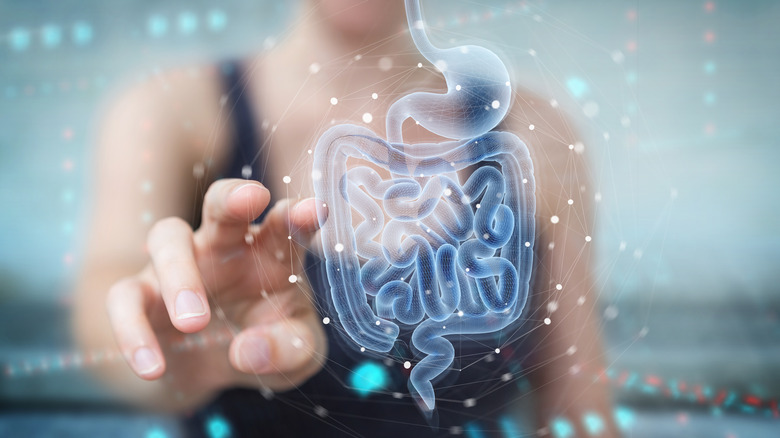What You Need To Know About A Low Histamine Diet
Antihistamines, such as Zyrtec and Allegra, are used to help fight pesky allergy symptoms, as are some nasal sprays and decongestants. Allergic reactions happen when histamine levels in the body get too high. Histamine is a naturally occurring chemical in the body that increases and reacts to defend you upon sensing foreign invaders, such as pollen or pet dander. When the immune system senses a dangerous allergen, it triggers the mast cells of your skin, lungs, nose, mouth, gut, and blood, to release more histamine (via WebMD). This is what causes those unwanted allergy symptoms like runny nose, itching, sneezing, hives, and even stomach upset.
Histamines, while meant to protect us, can sometimes create the opposite effect, causing more harm than good. Rarely, a person can develop "histamine intolerance," which occurs when histamine levels become too high in the body. Unfortunately, due to its variety of symptoms, this condition tends to get mistaken for other medical conditions, such as food allergies or gastrointestinal diseases (via Medical News Today). Symptoms of histamine intolerance might include headache, face flushing, unexplained anxiety, dizziness, sneezing, inflammation and irritation of the skin, congestion, and gastrointestinal symptoms.
Causes of histamine intolerance
According to Healthline, there are some conditions that can increase the risk of developing histamine intolerance, including gastrointestinal disease or trauma, liver conditions, chronic stress, or an imbalance in the gut microbiome. There are also some prescriptions which might cause increased histamine in the body, such as antibiotics, muscle relaxers, antipsychotics, and pain medications. According to Histamine Intolerance Awareness, certain people can even acquire a "temporary histamine intolerance" after an upset in the gut.
For the one percent of the population living with histamine intolerance, histamine-rich foods can further decrease the amount and effectiveness of diamine oxidase (DAO) in the body, which is the primary enzyme that breaks down ingested histamine. When the DAO enzymes are unable to break down the histamine, more end up in the gut and bloodstream, which causes the increase in immune response (per Medical News Today).
Currently, there is limited information available on histamine intolerance and no reliable tests to diagnose the condition. However, if a histamine intolerance is suspected, your doctor may suggest an elimination diet. This diet consists of removing high histamine and possibly common allergen foods for a minimum of four weeks, and then slowly adding them back in, one by one, to determine which food may be causing your body to react.
Managing histamine intolerance with diet
Histamine intolerance presents differently in everyone and not every person will react to the same high histamine foods, which is why an elimination diet is recommended (via WebMD).
Foods containing high levels of histamine include fermented foods, like kefir, sauerkraut, kombucha, aged cheese, and kimchi. Cured meats, deli meats, processed foods, and leftovers are also high in histamine. More common culprits include yogurt, tomatoes, cherries, strawberries, peanuts, and eggplants, which should also be avoided during a low histamine diet (per Medical News Today).
According to Histamine Intolerance Awareness, keeping a food diary is key to helping determine which foods are increasing histamine in your body. Once you begin adding foods back into your diet, you can note your reactions, or lack of, and keep track of what foods to abstain from. The site also offers a comprehensive look at histamine intolerance and offers a variety of resources to help those who suspect they may have the medical condition, although sharing your concerns and symptoms with your doctor is the best place to start.



